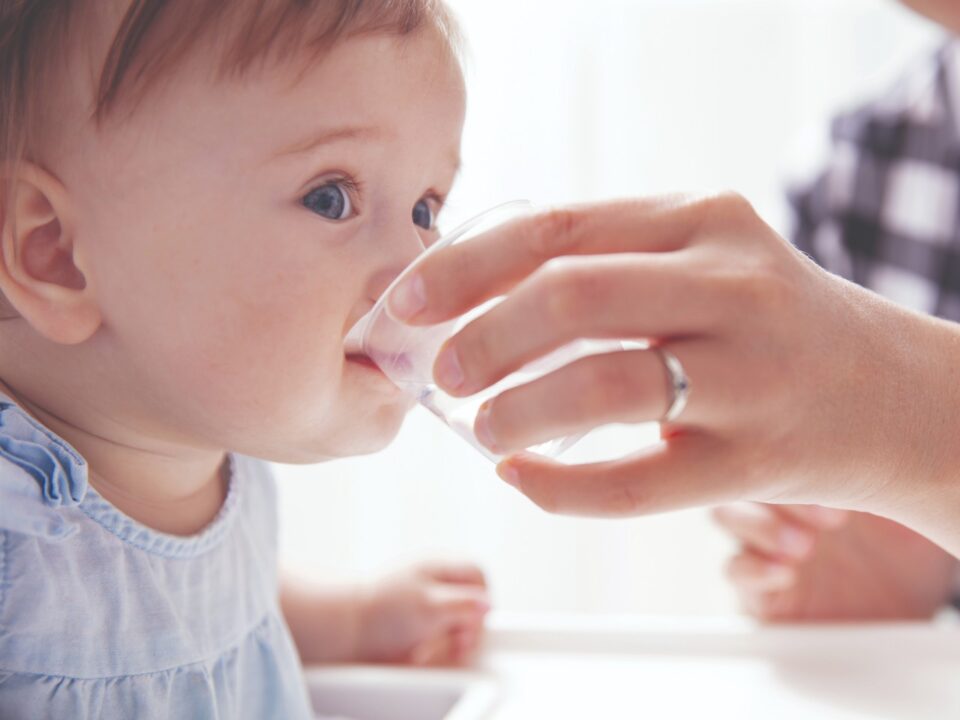
Just say No to the Sippy Cup
Did you know that sippy cups are the subject of a hot debate? Their usefulness is being questioned by professionals and parents alike. Dr. Robert Delarosa, a father of two with Associates in Pediatric Dentistry, weighed in with his thoughts on the sippy cup do-or-don’t argument.
Traditionally, sippy cups are a rite of passage, a transitional item to help facilitate the switch from bottle feeding to open-lid cups or straws by teaching how to regulate flow and sip instead of suckle. On average, training with a sippy cup begins between 6-9 months with the goal being seamless use of a cup by 12 months old.
This is all well and good, but the debate begins with the benefits and drawbacks. Dr. Delarosa believes that the only real benefit of a sippy cup is to prevent spills. As a convenience item, this makes sense. So, what are the negative aspects?
“From a developmental standpoint, in some babies, the utilization of a sippy cup may delay the development of the oral musculature and other structures that will be necessary to progress to a more mature swallowing pattern,” says Dr. Delarosa. “The convenience of having the sippy cup available constantly can potentially lead to severe tooth decay and slow the development of the more mature swallowing pattern.”
Additionally, there is also an element of danger involved in unsupervised sippy cup usage. He has had “some patients who hold the sippy cup between their teeth while in motion then fall and traumatize their lips and gums with it.”
To minimize dependency and the possible detrimental effects of using sippy cups, it takes some work from you as the parent to set up healthy boundaries. Experts like Dr. Delarosa discourage consistent consumption of cavity-promoting fluids like juices and other sugary drinks and instead recommend they only be offered with snacks or meals. The problem with sippy cups and cavities is that often, children are allowed to drink from their sippy cups all day. The sugar from these drinks then sits on the teeth all day, leading to tooth decay.
With all of this in mind, if you’d like to skip the sippy cup stage, Dr. Delarosa has some advice: get to the open-cup-with-or-without a straw phase.
“I understand it takes an adjustment in behavior, but as long as we can keep the child hydrated it is not necessary for them to have constant access to fluids. Obviously, hotter seasons and more outdoor activity can require more fluid intake, but still not on a continual basis,” explains Dr. Delarosa.
Whether or not you decide sippy cups are necessary, the goal is to promote healthy teeth and gums. The American Academy of Pediatrics and the American Academy of Pediatric Dentistry recommend that a dental home be established for children by the age of one. Dr. Delarosa warns that the rationale behind this concept is that dental caries (cavities) are the number one childhood disease in America, and it is a mostly preventable disease with the adoption of good early habits.
Setting up a schedule of daily brushing and flossing, responsible snacking, and the appropriate level of fluoride exposure as well as routine dental visits are imperative. For more information about proper dental health for children, the American Academy of Pediatric Dentistry has plenty of resources available on its website, aapd.org.
Ultimately, as parents, it’s our job to use the information and resources available (as well as our good judgment) to keep our children safe, healthy, and developing properly all while not losing our minds. If the sippy cup is right for you and your child, use it. If you’re wary, try moving on to an open cup or straw instead.





